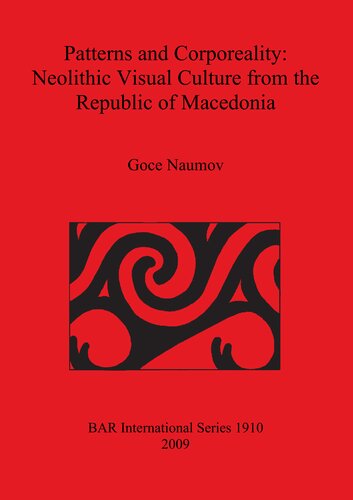

Most ebook files are in PDF format, so you can easily read them using various software such as Foxit Reader or directly on the Google Chrome browser.
Some ebook files are released by publishers in other formats such as .awz, .mobi, .epub, .fb2, etc. You may need to install specific software to read these formats on mobile/PC, such as Calibre.
Please read the tutorial at this link: https://ebookbell.com/faq
We offer FREE conversion to the popular formats you request; however, this may take some time. Therefore, right after payment, please email us, and we will try to provide the service as quickly as possible.
For some exceptional file formats or broken links (if any), please refrain from opening any disputes. Instead, email us first, and we will try to assist within a maximum of 6 hours.
EbookBell Team

4.3
78 reviewsThe numerous Neolithic finds from the territory of the Republic of Macedonia show an abundance of data which can be concentrated into different relations. They all approach certain ideas through which we attempt to learn about the character of Neolithic populations and their way of life. Within the context of the explored Neolithic settlements from the Republic of Macedonia, a large number of ceramic finds (decorated vessels, figurines, seals, models of houses and 'altars') are discussed in this study. The first chapter gives a brief introduction and acquaintance with the territory and its condition during the time of all Neolithic phases. Chapter two elaborates the white painted vessels originating from whole territory of the Republic of Macedonia. Chapters three and four deal with the painted compositions from the Middle Neolithic. In the chapter Imprints of the Neolithic Mind the ceramic stamps and the patterns which are usually engraved on them are presented. The second part of the book elaborates the concepts of corporeality present in the several ceramic figurative forms, including burials. Subsequent chapters are dedicated to the anthropomorphic vessels, placed in a wider context with those excavated in the Neolithic from south-eastern Europe, as well as later phases. The last chapter, 'Housing the Dead', completes the concept of burials in vessels, 'oven' forms, and ceramic 'houses'.